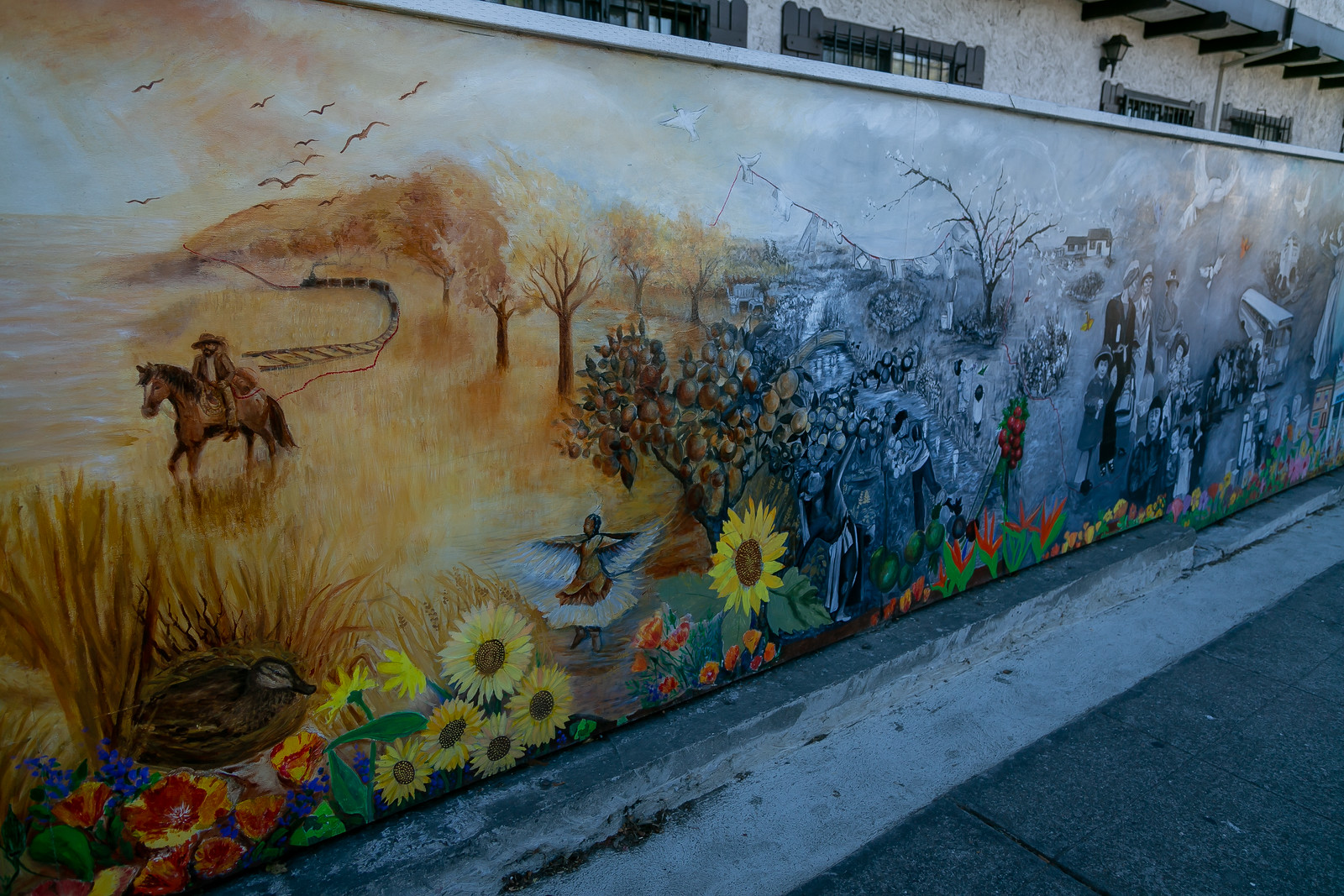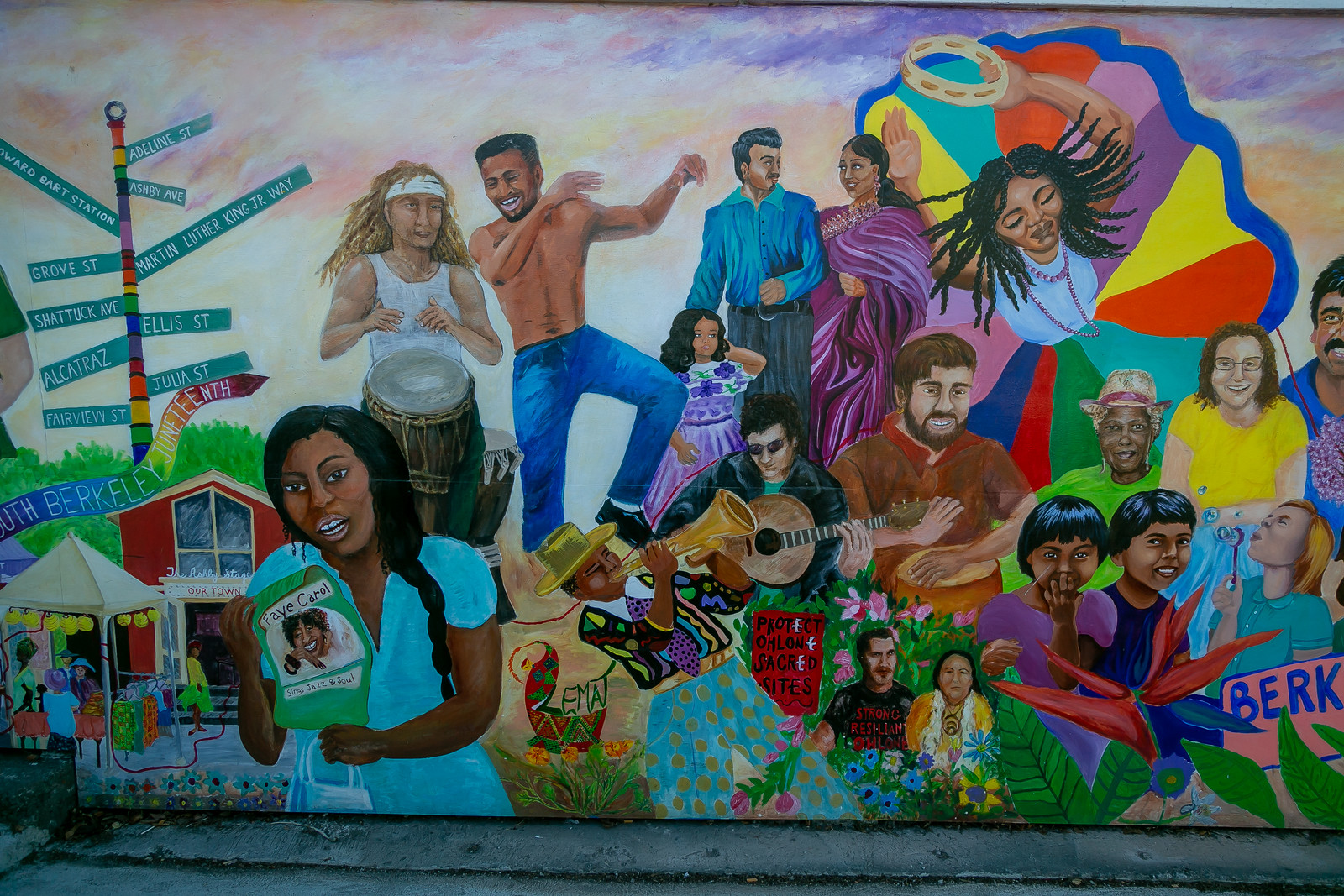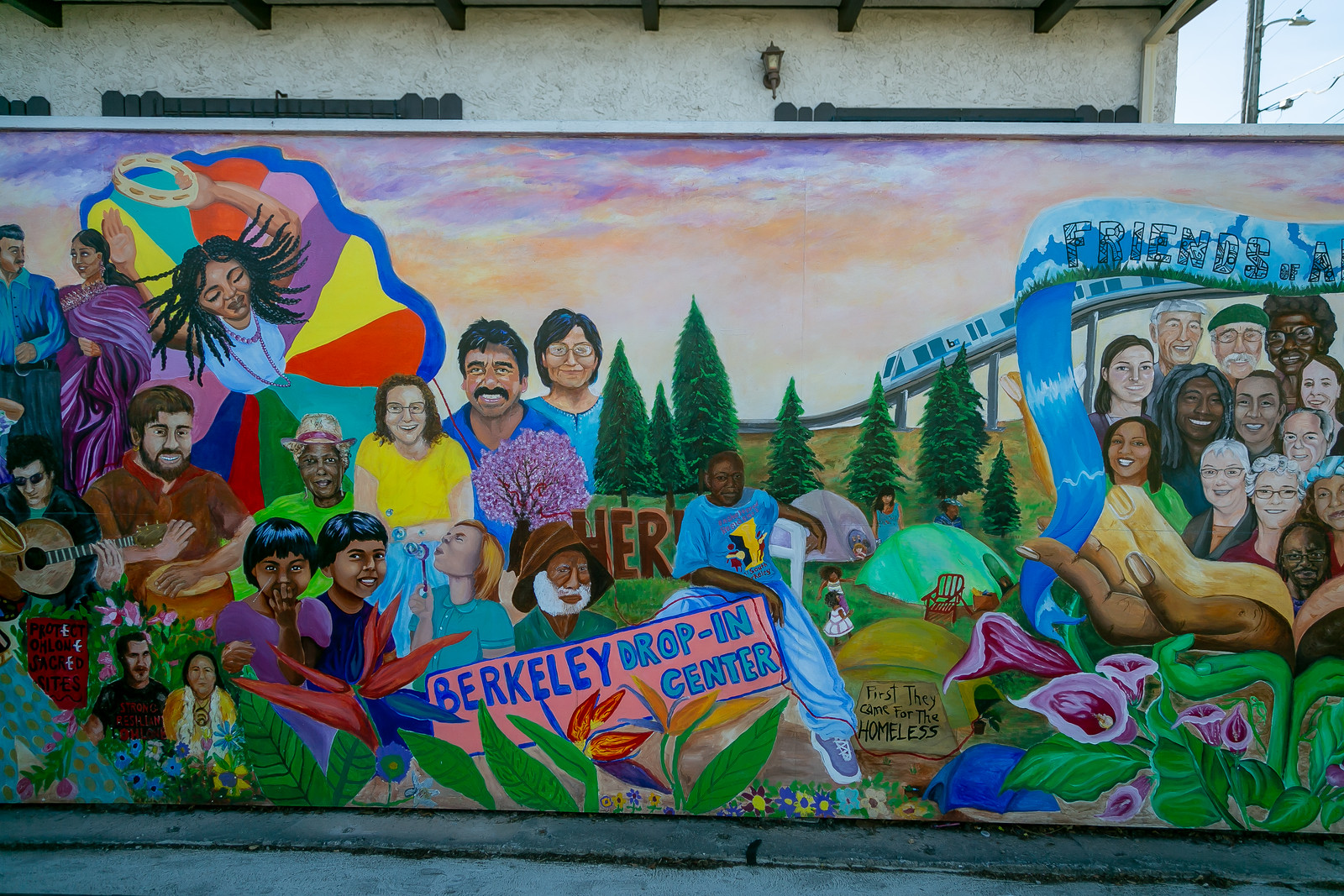I have written many posts about murals. They are in our heart, they’re in our soul. Here are a handful of new ones.
How can I not start with Connie Bleul, a Quirky Berkeley OG? I have posted on her public art and her private art. Now, a new micro-mural on Telegraph.
Also on Telegraph – at Durant – is this:
What do I say about this? HELP! Trippy?
At San Pablo and Channing we find a graffiti-style mural by Crazy Mister Sketch who I think is from Innsbruck.

Photo: https://www.tt.com/kultur/kunst/15308193/graffiti-kuenstler-crazy-mister-sketch-kunst-auf-grauem-gemaeuer
His website says he makes graffiti and urban art: “Painting and drawing was pretty much always my thing, so naturally when I found out that it could be done on walls, I had to try. I am an urban artist and graffiti writer from Innsbruck and I go by Sketch. I like to use elements from oldschool graffiti as well as graphic design, realism, typography, nature and comic books. After a few active years in the urban art scene, I started offering comission works in and around Innsbruck and I started to travel abroad to paint. So, with my passion for painting walls came a passion for travel, photography and exploration. Today I paint in large cities as well as in places that this artform has not yet reached – but always with style, presicion and an eye for detail.”
His mural here:
North on San Pablo, a few blocks past University Avenue, is this cat.
This is a chat extraordinaire.
And now to the main event in the main arena, a block-long mural on Ashby just above the Malcolm X elementary school. It celebrates the history and culture of Berkeley, emphasis on south and west Berkeley.
From the east looking west:
From the west looking east:
Now close-ups:
New in Berkeley – Oholone food in the back of University Press Books on Bancroft. See here and here.
The internment of Japanese Americans at the outset of World War II is one of our country’s low moments. The Berkeley Historical Plaque Project wrote this: ”
Fear and anger after Japan’s attack on Pearl Harbor inflamed public sentiment against Japanese-Americans, who were already heirs to a long legacy of anti-Asian discrimination on the West Coast. President Franklin Roosevelt’s Executive Order #9066 in February, 1942, led to the forced removal of over 100,000 individuals from West Coast homes to barren, guarded, internment camps.
Berkeley’s half-century old Japanese-American community was uprooted in a few months. Approximately 1,300 “persons of Japanese ancestry, alien ornon-alien,” including UC students and professors, had to vacate homes, quit jobs, leave school, close businesses, and sell possessions.
While most Californians supported internment, some were opposed, including activist Ruth Kingman. She asked her church, First Congregational, to provide a dignified place for internees to assemble. The church offered Pilgrim Hall. For four days local church women came here to offer food and support while Berkeley’s Japanese-Americans registered, then boarded buses for relocation camps.
In 1945 the interned Japanese-Americans were allowed to return to Berkeley. Some resettled elsewhere. Many who returned here had permanently lost houses, jobs, and businesses.
Above and below – inspiring images of how we see our City and our neighbors.
I took the draft post to my friend’s quarters. He was finishing up packing his suitcase.
“Where are you headed?” I asked him.
He flipped me s postcard:
I asked, “I know that the Mayo Clinic is there and that it is on the banks of the Zumbro River, but nothing else. Why are you going? For the waters?”
He looked up. “That’s Bogart in Casa Blanca. Everybody knows that. No, not for the waters. The History Center of Olmstead County is getting out all their creepy dolls and having a creepiest doll contest. I gotta check it out.” My friend had been in big help to me in making the Quirky Berkeley post about creepy dolls and so I wasn’t entirely surprised that he would do this.
He wasn’t done. “But that’s not all.
He flipped me another postcard and an advertisement.
“I have a solid lead on a General Electric eye-level wall refrigerate – your friend Jon Balderston tipped me off about it. I think it would be perfect for my quarters and it would fit my needs.
“It’s for sale in Viola, Wisconsin, two hours from Rochester. I get to cross the Mississippi! Viola is best known for its annual gopher count.”
Realizing that he was on one of his patented, endless digressions, I interrupted. “Before you go, could you take a look at the murals in this post and let me know what you think?”
He gladly sat down and took his time going through the post. His verdict?



























